Stingrays are native to the Amazon River in South America. Because of their mysterious appearance and gliding swimming posture, they are vividly called "devil fish". It is this unique charm that makes stingrays extremely popular in the ornamental fish world and deeply loved by fish lovers. So, which stingray species are the most ornamental and beautiful?
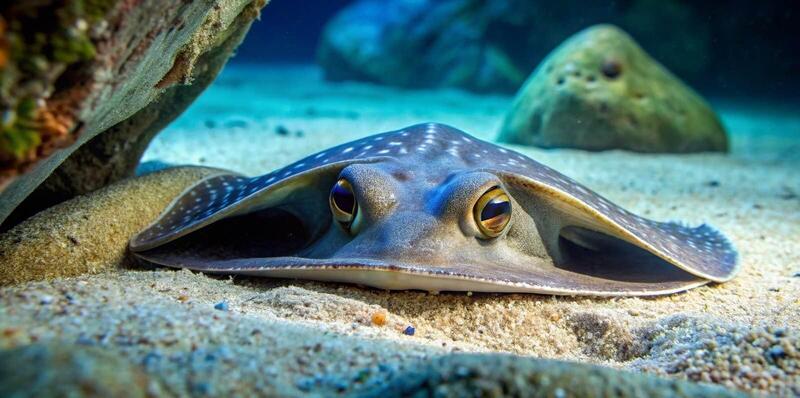
This article lists the top ten stingray species with outstanding appearance, including plum blossom stingrays, black emperor stingrays, black and white starry stingrays, emperor stingrays, Colombian tricolor pearl stingrays, leopard stingrays, antenna stingrays and other strains. Each species has amazing patterns and body colors, which can be called works of art in the aquarium.
Plum Blossom Stingray is one of the most ornamental species among many stingray species, and is also considered one of the most beautiful stingrays. Its pattern is particularly unique, and the spots are arranged in the shape of plum blossoms, which is highly recognizable and gives people a strong visual impact, so it is deeply favored by aquarium enthusiasts.

When selecting, plum blossom stingrays with "black bottom, dense and fine spots" are generally the best. If the pattern is coarse and sparse, the ornamental value is relatively low; on the contrary, the smaller and denser the pattern, the more uniform the overall, and the higher the quality.
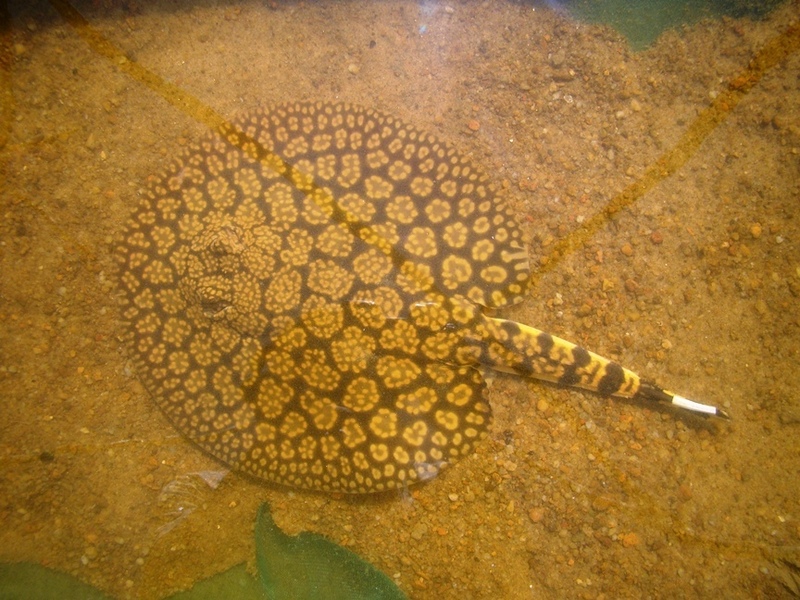
It should be noted that Plum Blossom Stingrays are extremely sensitive to changes in salinity in the water. Especially during the conditioning process, if the salinity is too high, it may cause the protective mucous membrane on its body surface to fall off, which may lead to health problems. Therefore, the water quality, especially the salinity level, must be strictly controlled during breeding to ensure that it is within a safe range.
Although the Black Emperor Stingray may not be known as the most beautiful stingray species, it is undoubtedly the most expensive and most collectible one in the stingray world. In the list of stingray species, it can be said to be the "aristocrat among aristocrats".
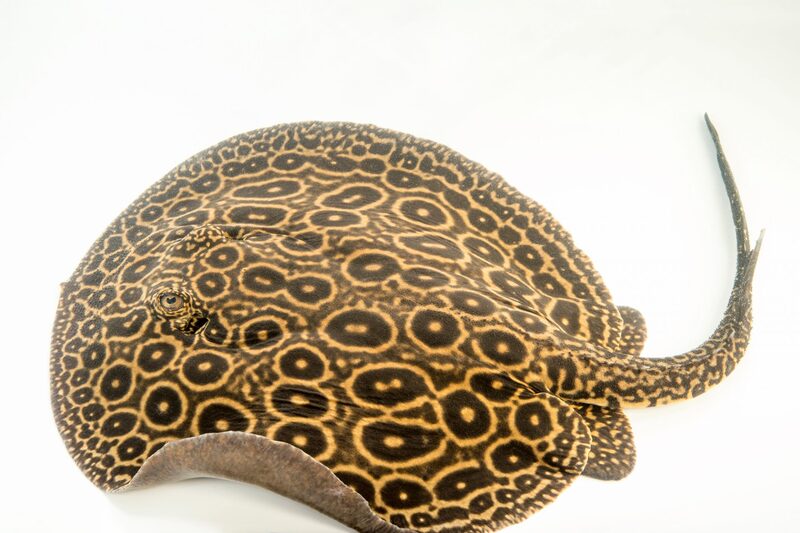
The base color of this stingray is light yellow, and the back is covered with black round or irregular spots. Some even have a unique "8"-shaped pattern, so it was once called "88 Stingray" and set a high price record in the history of stingrays. Because of its auspicious appearance, unique patterns, and the meaning of wealth and good fortune, the black emperor stingray is often regarded as a rare treasure.

The charming pattern changes, colorful and layered colors, and the innate kingly aura make the black emperor stingray the ultimate dream of stingray players. No matter how the price rises, no matter how scarce and complicated the introduction channels are, as long as there is movement in the market, aquarium stores everywhere will try to introduce it, just to meet the eager pursuit of high-end players.
Black and white starry sky is the most popular star species in the black and white stingray series. It has become the favorite of many aquarium enthusiasts with its highly recognizable patterns and visually impactful color matching.
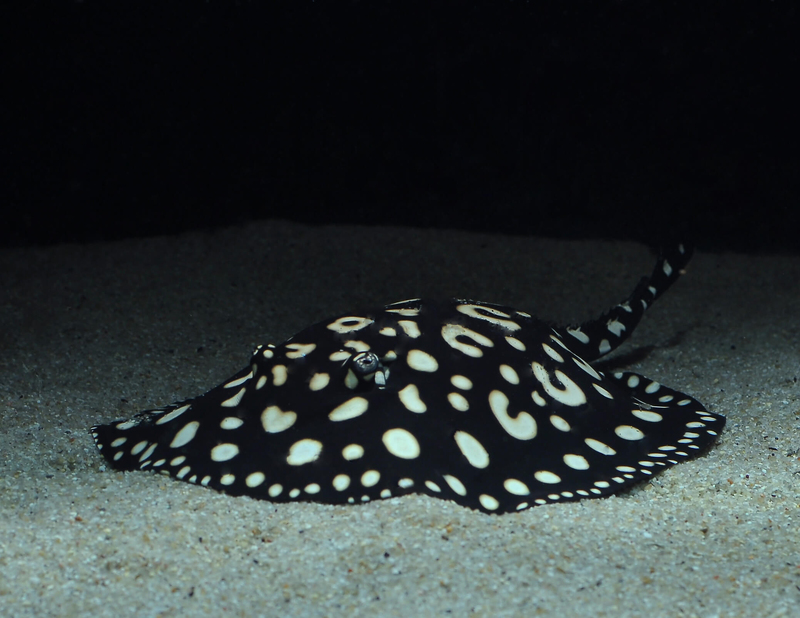
The body color of this stingray is black with bright white spots, showing the ultimate beauty of black and white contrast. Compared with ordinary black and white stingrays, the black and white starry sky is also covered with small spots on the skirt, not just concentrated in the center of the body disc, which is its uniqueness. The most iconic feature is the six white spots in the center of the body disc, which are arranged in an inverted triangle of 3, 2, and 1 from head to tail. The regular symmetry is an important basis for judging this species.
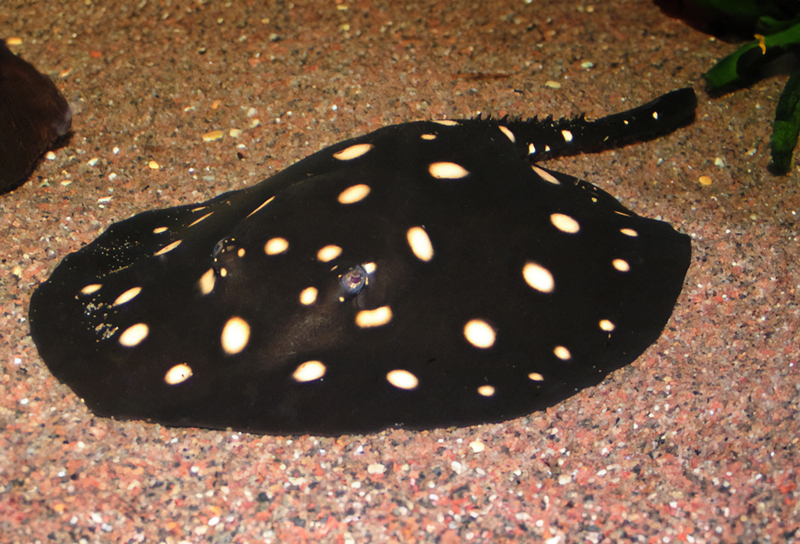
What is even more amazing is that the fine white spots all over the body disc are like stars pouring down on it, and the skirt is decorated with delicate lace-like edging. The overall texture presents an unrestrained sense of luxury, as if the Baroque artistic aesthetics are condensed in a stingray, combining complexity and elegance, gorgeousness and order.
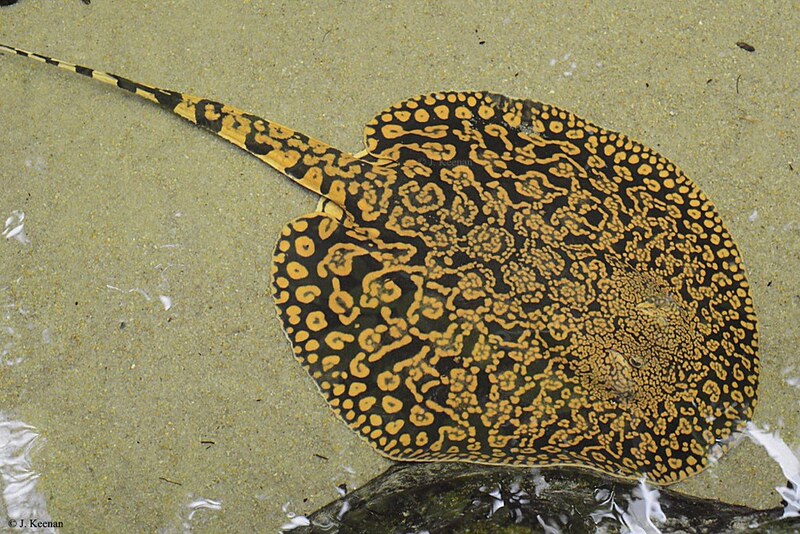
Emperor Stingray, also known as Tiger Stingray or Emperor Tiger Stingray, is one of the most popular representatives of ornamental stingrays, and has always been at the top of the list of beautiful species of various stingrays. In 2017, among the 18,000 species newly discovered by scientists around the world, the American International Species Identification Institute specially rated the emperor stingray as one of the "Top Ten Most Strange New Species", which shows its unique charm.
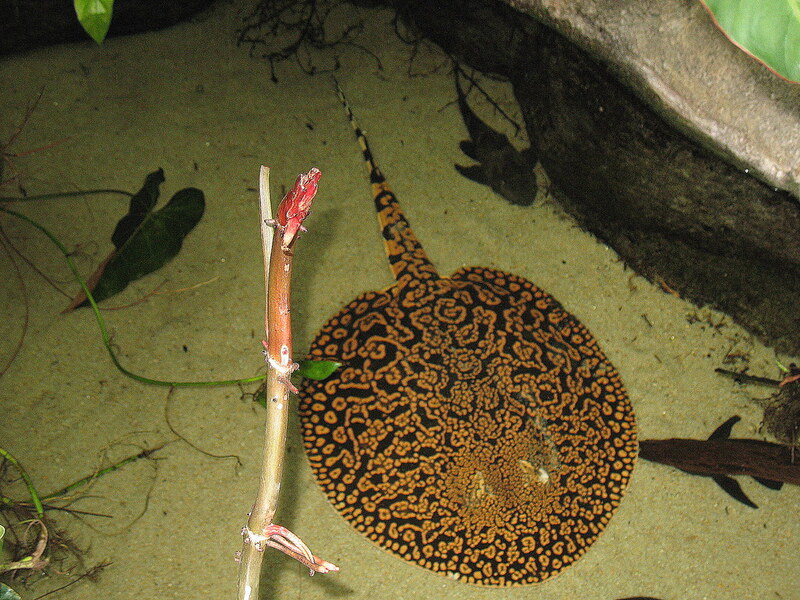
The body color of the emperor stingray will gradually change significantly as it grows, from the low-key and simple larvae to the dazzling adult stage, which is breathtaking. Its body is covered with irregular golden spots, as natural and smooth as an oil painting, showing the tropical exotic style of South American stingrays. Especially the black and yellow color matching of the tail, which forms a strong contrast with the pure white and flawless abdomen, constitutes the most recognizable and ornamental characteristic of this species.
If you are looking for the most stunning stingray, then the "Colombian tricolor pearl stingray" is definitely worth mentioning. It originated from the regional variant of the Peruvian pearl stingray, but it is better in appearance. Its color level and pattern changes can be called a work of art among stingrays.
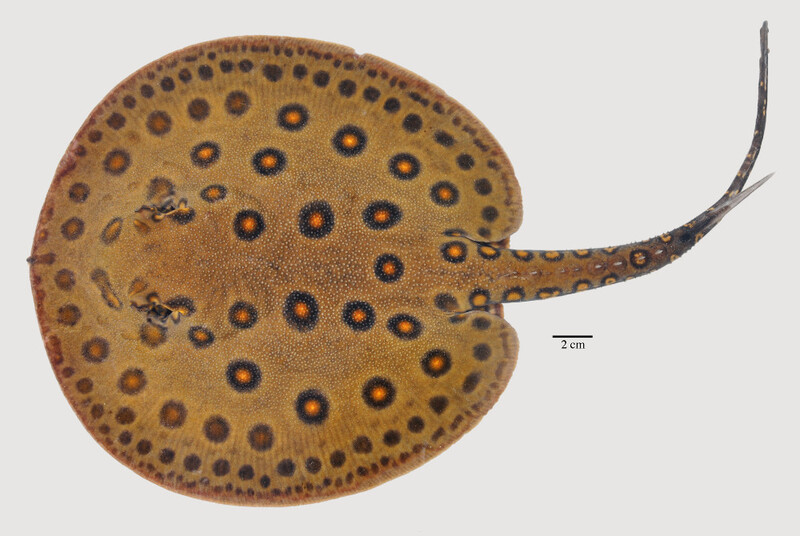
The base color of this species is usually brown or light yellow, and the body disc is dotted with circles of bright yellow spots, each of which is outlined by a black border, forming a unique "bead chain effect". As the individual grows, two to three circles of rings or bands will appear on the edge, like a delicate bracelet around the body disc, and complex patterns like worms and snakes will gradually extend between the spots.
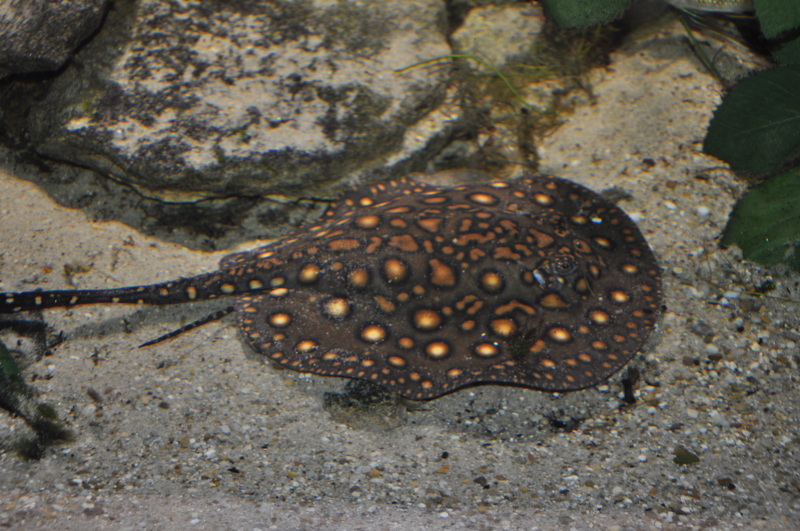
An adult Colombian tricolor pearl ray in excellent condition, with dots, patterns and chain patterns complementing each other, forming a stunning visual feast.
Leopard ray is also one of the most ornamental stingrays. It is widely distributed in the Amazon River and its tributaries, and can be seen in almost the entire basin. Due to the diversity of ecological environments and frequent natural hybridization between individuals, leopard rays are prone to multiple variations in body color and pattern, making it difficult to strictly classify them based on pattern alone.
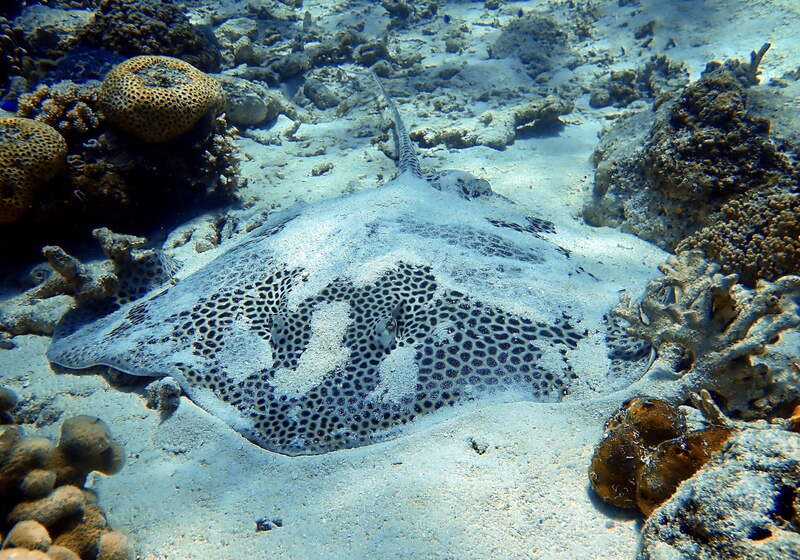
The typical feature of leopard rays is that their body is covered with irregular spots, including golden dots of varying sizes, small and fine spots, and tortoise-shell-like patterns, which are extremely beautiful and recognizable. Because of this, it is extremely popular in the ornamental fish market.

According to the different patterns and colors, people give leopard rays many nicknames, such as "green bean ray", "golden leopard ray", "gold and jade", "full of stars", "tortoise shell full of stars", etc.
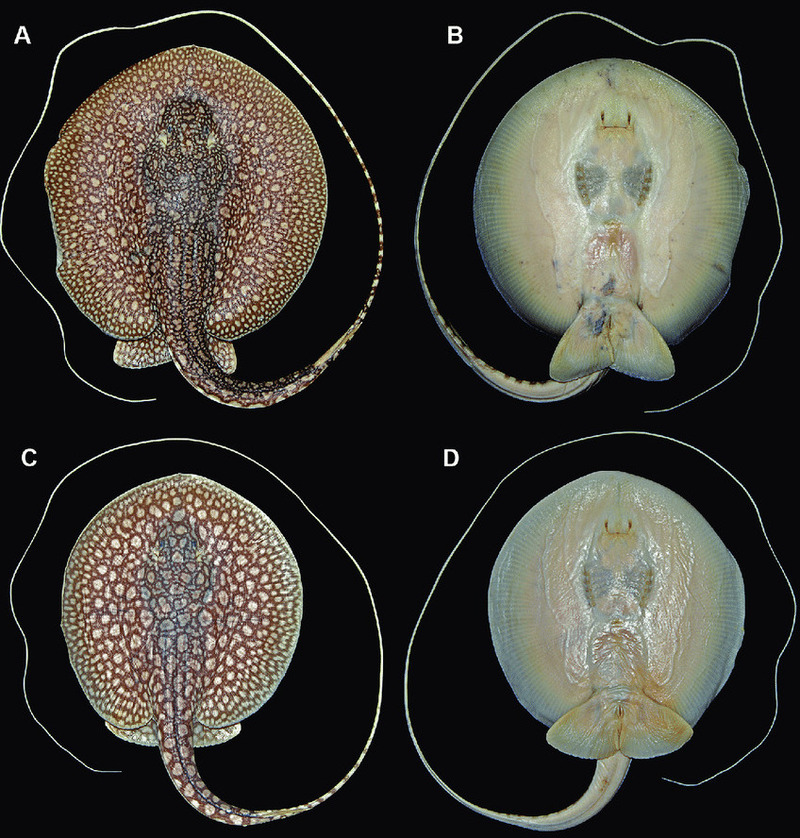
Antenna ray is a widely distributed South American stingray species, mainly inhabiting the Amazon River Basin, so it has been recorded in freshwater waters in countries such as Brazil, Ecuador and Peru. It belongs to the small-eyed ray family, and its biggest appearance feature is that its disk is covered with dense and small light-colored dots, and the overall pattern is delicate and exquisite. In addition, it has an extremely slender tail, like an antenna, so it is named "antenna ray".
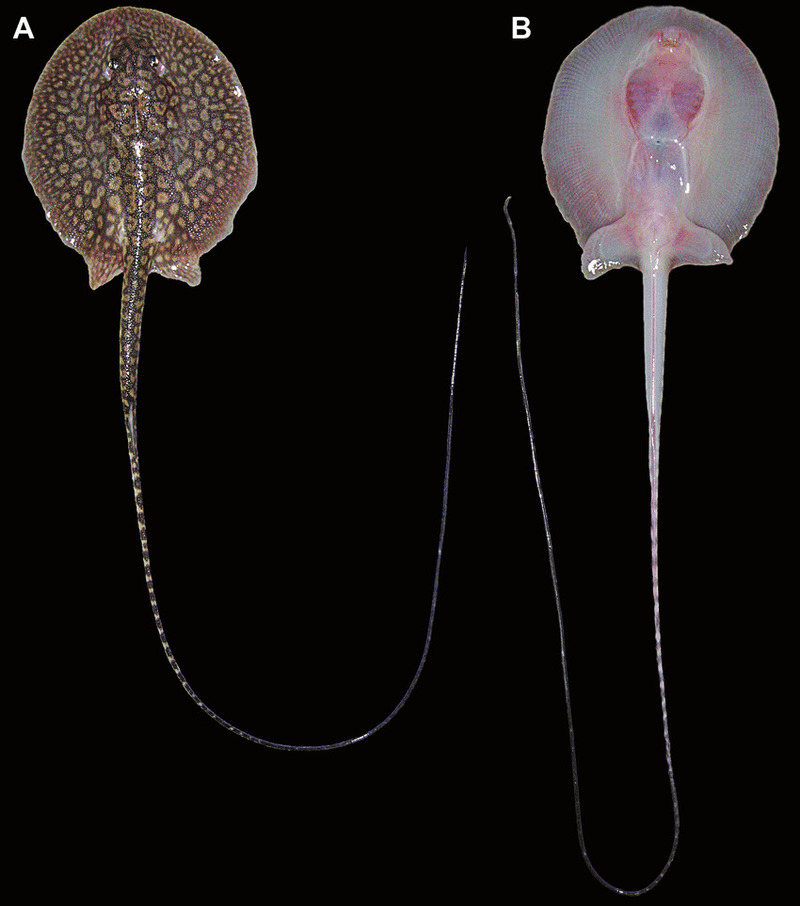
This stingray is an advanced type in terms of difficulty in raising, and has strict requirements on the environment. It prefers clean water with high dissolved oxygen and is very sensitive to changes in water quality. It can generally only be fed with live bait, and it is difficult to adapt to artificial feed. Newly imported individuals are usually weak, have a long adaptation period, have a weak feeding response, and are prone to tail damage, which further increases the difficulty of raising them.
Peruvian Pearl Stingray, also known as Pearl Stingray, is native to Peru in South America and is a species of stingray with extremely high ornamental value. Its body is disc-shaped, with a maximum diameter of 60 cm, and its tail is slender like a whip with beautiful lines.
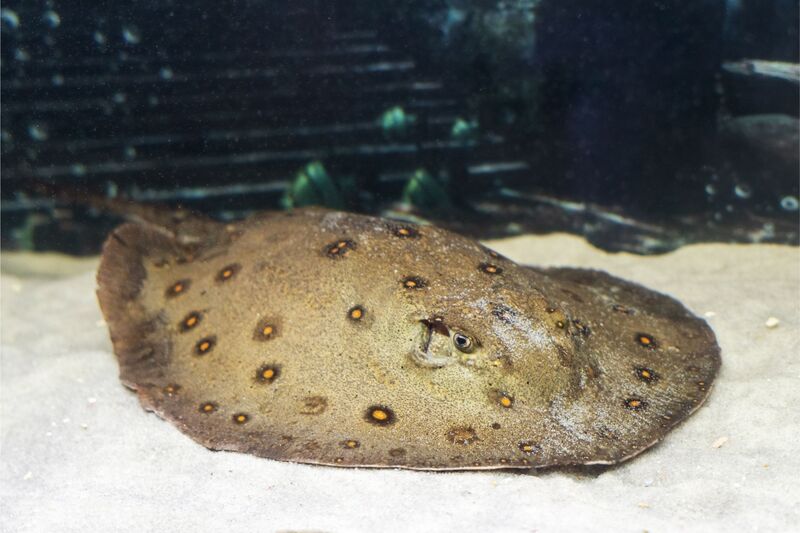
In terms of appearance, the base color of the pearl stingray is usually dark brown, and the surface of the body is covered with bright yellow spots of varying sizes, and each dot is surrounded by a black border, making the pattern highly recognizable. Its body color will be slightly adjusted according to the changes in ambient light and background, and as the individual grows, the overall base color will gradually deepen, showing more calmness and gorgeousness.
The fish has a gentle and lively personality, is easy to blend in with the environment, and is also easier to establish a sense of closeness with the breeder. Compared with some stingrays that have higher environmental requirements, the Peruvian pearl stingray has a stronger ability to adapt to water quality and a lower breeding threshold, making it one of the species that is very suitable for beginners. In addition, the price is affordable and the performance is excellent, so it is very popular among stingray enthusiasts.
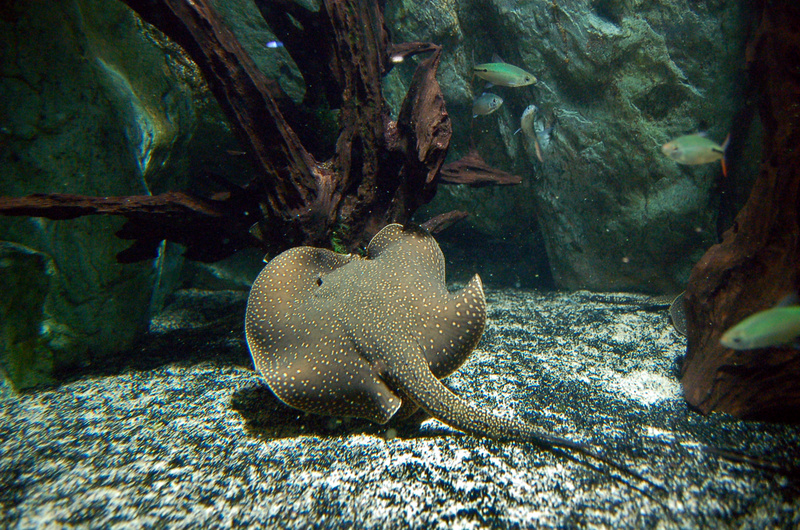
Tailu stingray is a very ornamental stingray. Its body pattern is often mistaken for leopard ray. The two are very similar in appearance, so they are often confused when classified. Especially those leopard ray individuals with neatly arranged spots and evenly distributed patterns are difficult to distinguish from Tailu stingrays at a glance.
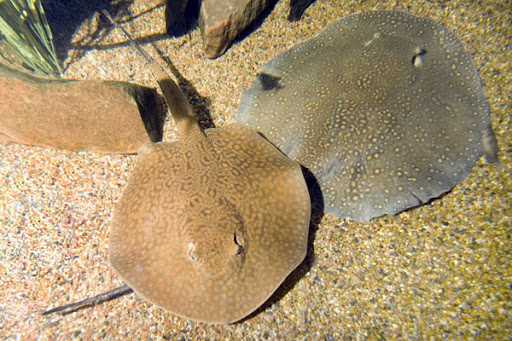
A notable feature of Tailu stingray is that its back is covered with large light-colored round spots. This dot pattern is very recognizable. Although the dots are visually similar to those of the "Baby's Breath" stingray, the spots of the Baby's Breath variety are often smaller and less numerous, and often appear in different sizes and scattered distribution. Therefore, after careful observation, the difference between the Tailu stingray and the Baby's Breath stingray can still be clearly distinguished.
Mini stingrays are a popular variety of freshwater stingrays. As the name suggests, they are small in size, mostly appear in the juvenile state, and are highly ornamental. In the aquarium market, mini stingrays are favored by fish lovers for their cute appearance and relatively gentle personality.
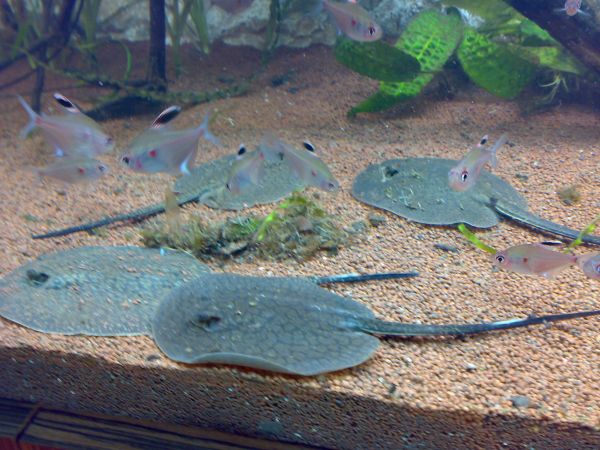
From the appearance, the overall shape of the mini stingray is somewhat similar to that of the pearl stingray. Both are disc-shaped, with the back color ranging from dark brown to light brown, and the surface is dotted with cream-colored dots, which are as delicate and beautiful as pearls. However, if you look closely, you will find that there are obvious differences in the body disc patterns of the two. The regularity and density of the pattern distribution are one of the key features to distinguish them.
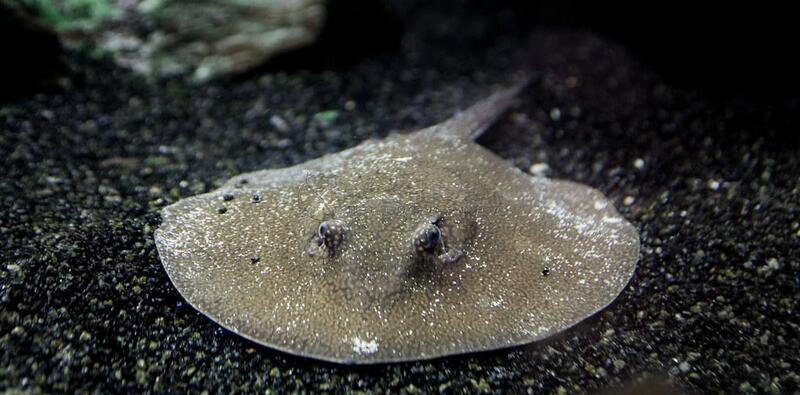
It should be noted that most of the mini stingrays on the market are circulated in the state of juveniles, the individuals are small, and the color has not yet completely stabilized, so higher experience and observation are required for identification.
The ranking of the top ten most beautiful stingrays is mainly based on the appearance evaluation/popularity of the animals, and is recommended with reference to relevant information on the Internet. If you have any questions, please comment/criticize at the end.
animal tags: Dasyatidae Stingrays
We created this article in conjunction with AI technology, then made sure it was fact-checked and edited by a Animals Top editor.